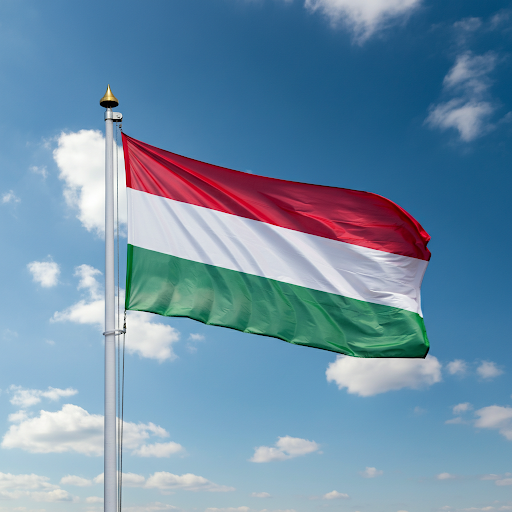
All About the Hungarian Flag: A Symbol of History, Freedom, and Pride
Share
The Hungarian Flag: A Symbol of History, Freedom, and Pride
Introduction to the Hungarian Flag
The Hungarian flag is one of the most recognizable symbols of Hungary. Its horizontal tricolor design—red, white, and green—carries deep historical and cultural significance. But how did this iconic flag come to be, and what do its colors represent? Let’s dive into its fascinating story.
The Design and Meaning of the Colors
The Hungarian flag consists of three horizontal stripes:
Official Interpretation: There's no official legal interpretation of the colors' meanings. However, in general:
- Red: Represents the strength and bloodshed in Hungary’s struggles for independence.
- White: Symbolizes faith, purity, and Hungary’s moral integrity.
- Green: Stands for hope, the lush Hungarian landscape, and the promise of a prosperous future.
Always say it red, white, green order as it is very important.
This combination of colors has been used in various forms since the 13th century, making it a deeply rooted symbol of Hungarian identity.
A Brief History of the Hungarian Flag
The Hungarian tricolor as we know it today was officially adopted on October 1, 1957. However, its origins date back to the Revolution of 1848, during Hungary’s fight for independence from the Habsburg monarchy. The colors were inspired by the historical Coat of Arms of Hungary, which prominently featured red and white stripes along with a green background.
Throughout history, the flag underwent changes, particularly during periods of occupation and political upheaval. Despite these challenges, the red, white, and green colors have remained a constant emblem of resilience and unity.
The Hungarian Flag in Modern Culture
Today, the Hungarian flag is proudly displayed during national holidays such as March 15th, which commemorates the Revolution of 1848. It also waves high during international events, symbolizing Hungary’s rich heritage and its contributions to global culture and history.
In addition to its national role, the flag’s colors are widely used in Hungarian sports, art, and traditional crafts, further embedding it in the country’s cultural identity.
Interesting Facts
- The flag’s design follows a simple yet elegant horizontal layout, which has inspired variations for Hungarian organizations and regions.
- Its colors align with the principles of the Pan-Slavic movement, which aimed to unify Slavic nations but are distinct in representing Hungary's unique identity.
- While it may look similar to the flags of Italy and Bulgaria, the Hungarian flag’s specific symbolism and historical roots set it apart. The orientation and meaning of the colors are unique to Hungary.
More Fun Facts
- Árpád Dynasty (1000-1301): The origins of the colors can be traced back to the Árpád dynasty, the founders of Hungary. Their coat of arms featured red and white stripes, symbolizing the seven Magyar tribes that united to form the kingdom.
- Angevin Dynasty (1301-1387): The Angevin kings introduced the green color, representing the lush landscapes of Hungary.
- Habsburg Rule (16th-19th centuries): During the Habsburg era, the tricolor appeared in various forms, often combined with the Habsburg double-headed eagle.
- 1848 Revolution: The tricolor gained prominence during the 1848 revolution, becoming a symbol of Hungarian nationalism and the fight for independence.
- Soviet Era (1949-1989): The communist regime added the Rákosi coat of arms to the flag, symbolizing Soviet control. This emblem was removed during the 1956 Uprising, and the flag with the hole became a powerful symbol of resistance.
Learn More About Hungary
If you’re curious about Hungarian culture and history, check out these resources:
- Learn Hungarian Anywhere: Dive into the language and traditions of Hungary.
- Visit Budapest: Discover the breathtaking capital city of Hungary.
- Hungarian History: Explore Hungary’s storied past through expert insights.
